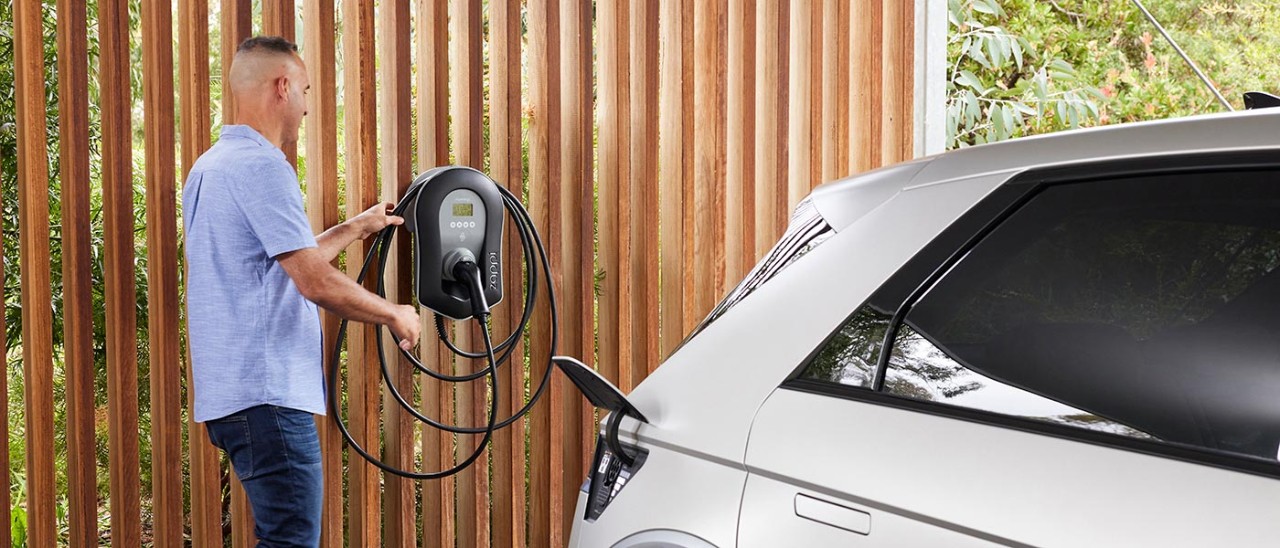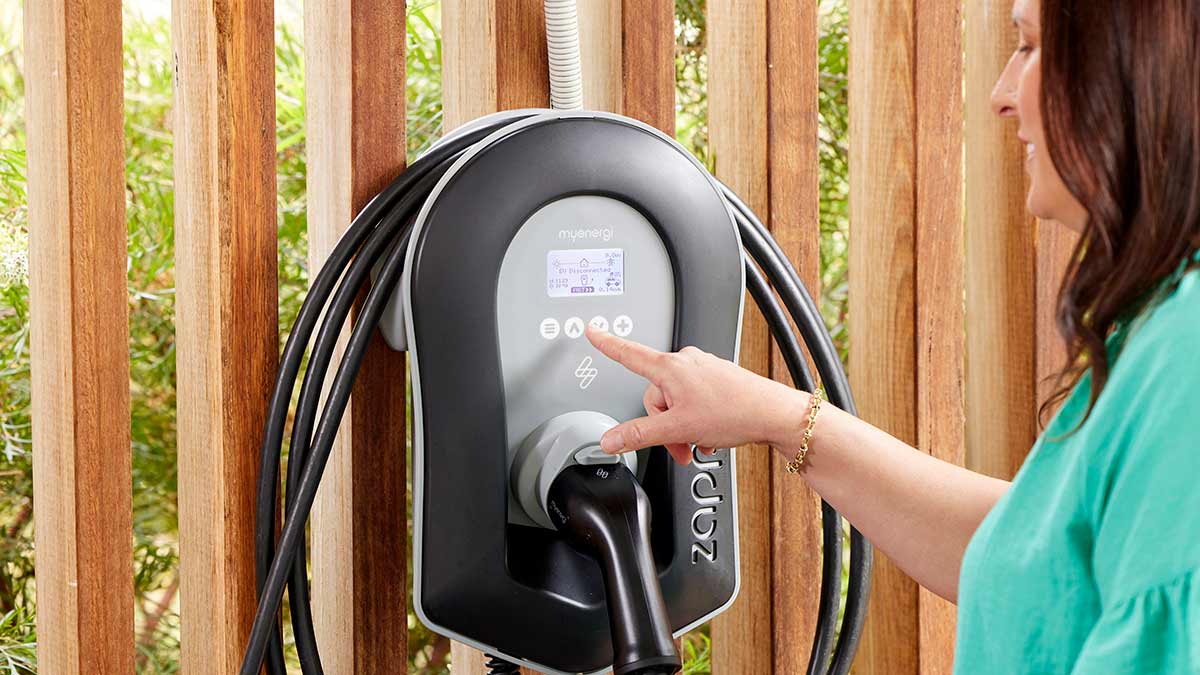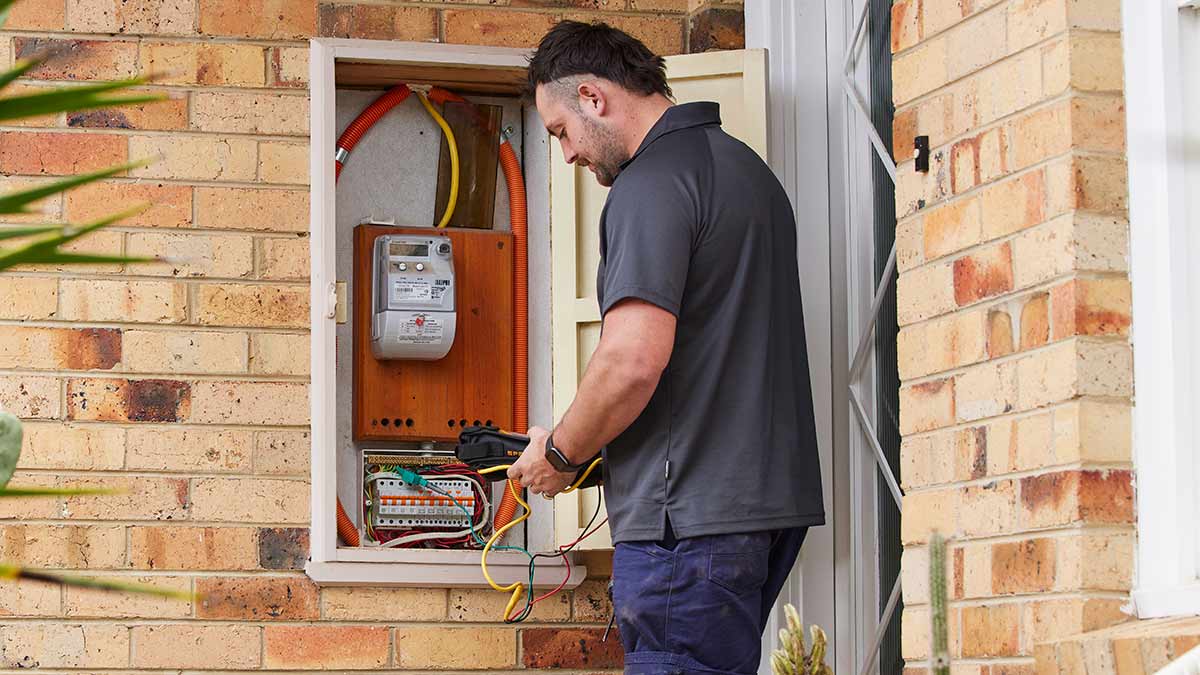You can now buy an EV for $25,000 and there’s a wide range of electric cars and SUVs for less than $45K from BYD, MG, GWM, Chery and other brands. Here are the cheapest EVs to buy in Australia right now.
Installing an electric car home charger: what to know

When buying an electric car, a home EV charger will likely be the most convenient and cost-effective way to charge the battery. Here’s a comprehensive guide to charging at home.
Nearly one in ten new car sales are electric vehicles in Australia, with buyers spurred on by the increase in charging infrastructure, and an influx of new and often more affordable EVs.
Ongoing government incentives and a stronger awareness of the benefits associated with battery-electric vehicles (BEVs), such as lower maintenance and running costs, have also contributed.
The ease and effectiveness of recharging is central to the uptake of electric cars, with many buyers factoring into their budget a home EV charger to cover their daily driving requirements.
This form of charging is highly convenient, cost effective and much faster and more efficient than plugging the EV into a regular household power point. Here’s a guide to getting your home set up as part of making the switch to battery-powered motoring.
RACV guides to help with buying an electric car
- Australia’s best electric cars and SUVs
- The cheapest electric cars in Australia
- What to know about buying a used electric car
- Electric car rebates, discounts and incentives
- Comparing EV and petrol car servicing costs
- Guide to electric vehicle charging, plug types and cables
In this article
- Why should I install a home EV charger?
- Where should I install the EV charger at home?
- Do I need to upgrade my power supply or switchboard?
- Is it worth getting solar panels and a solar battery?
- Can I charge an EV from an apartment block?
- How long does it take to charge an EV from home?
- What does it cost to charge an EV from home?
Why should I install a home EV charger?
The network of public rapid-charging stations for EVs is expanding across Australia, but for ultimate convenience that covers most motorists’ everyday driving needs, a home EV charger should fit the bill – and it is usually about half the price of rapid charging.
Compared to using a regular three-pin domestic power point at your home, which is the slowest way to charge an electric car, a home charging unit brings a number of benefits:
- Convenience – wall-mounted home EV chargers are usually tethered with a cable and fully set up to recharge your electric car as soon as you park at home, allowing you to keep your portable/mobile charger in the car for emergencies.
- Speed – a home EV charger’s 7kW AC power output (on single-phase power), up to 22kW (three-phase), is much higher than 2kW (approx.) from a regular power point, allowing for faster charging. This is important for compressing charging times into a shorter off-peak period, and for people who drive longer distances.
- Safety – home EV chargers are connected to your switchboard via a dedicated circuit, not an existing shared power point circuit, which may already have other large loads connected to it.
- Smart – home EV chargers are usually Wi-Fi-connected, often linked with a mobile app to view charging insights. They can usually be programmed to only charge at specific times, like during off-peak periods.
- Solar – more advanced home EV chargers like the Myenergi Zappi can integrate with a home solar system, enabling the car’s high-voltage battery to be charged whenever excess solar power is generated during the day.
The cost of the charger and installation by a licensed electrician will vary according to the unit and installation complexity, such as distance to the switchboard and any upgrades required for your electrical system at home. A budget of around $2000-$2500 should cover the unit and basic installation.
More: How to charge an electric car at home and how long it can take

Look out for the water resistance rating, among other features, when comparing home EV chargers, especially if the unit is located close to the outdoors. Image: Garth Oriander
Where should I install the EV charger at home?
The most logical spot for a wall-mounted home charging unit is the garage or carport, but the ideal location will be up to you. Consider which side of the garage or carport you want the charger, check the location of the charging port on your EV and factor in whether you usually reverse your car into the space.
You don’t need a great deal of room. For example, the Tesla Gen 3 Wall Connector measures just 345mm high, 155mm wide, and 110mm deep. The Myenergi Zappi is 439mm high, 282mm wide, and 122mm deep and features an IP65 water resistance rating, which means it can be installed outdoors. The Tesla Gen 3 is rated IP44.
Do I need to upgrade my power supply or switchboard?
Most average Australian residential homes will be connected to single-phase power, leaving three-phase power to those with higher-than-normal power demands. Your switchboard/fuse box should help you determine if you have single- or three-phase power: if there is one main switch, you’ll have a single-phase connection; three main switches will indicate three-phase.
Three-phase power provides higher charging capability for an EV and therefore quicker charging times, but even a single-phase unit should be sufficient for most car owners (see charging times section below).
A qualified technician will need to install a dedicated circuit from the switchboard to the home EV charger. The technician should also advise on the best way to connect the home charger; depending on its distance from the switchboard, the wiring may need to run through your ceiling or under the house. Older homes may also require the switchboard to be upgraded before a home EV charger can be installed.

A qualified electrician should be able to advise on all aspects of home EV charger installation.
Is it worth getting solar panels and a solar battery?
The lower costs associated with charging EVs compared to refuelling a car with an internal combustion engine can be maximised when using a home EV charger in combination with rooftop solar panels and a solar battery system.
You can potentially charge your EV directly from excess power generated by a home rooftop solar system during the day. Whether your home can generate enough energy to provide a full recharge will depend on factors such as the number of solar panels, the household’s average energy consumption, the size of your EV’s high-voltage battery and your driving habits. A good solar provider will be able to advise on sizing a solar system according to your requirements.
A solar battery will allow you to store energy sourced from your solar panels for use at night or other times as required. EVs are often charged overnight, especially when a full charge is needed, which can make a solar battery a practical option (depending on the size of the battery).
These are becoming increasingly popular in parallel with improved affordability, boosted by the Federal Government’s Cheaper Home Batteries Program (available from July 1, 2025). This program is designed to reduce the cost of a typical installed battery by around 30 per cent. State-based incentives are also available.
In future, with the enablement of bidirectional charging, you may be able to use your EV as a ‘battery on wheels’ and power your home from the energy stored in the car’s battery.
If home solar isn’t an option for you, but you still want to charge your car with renewable energy, look for an electricity retailer that offers a carbon offset or green energy plan.
More: How much solar energy you need to charge an electric car
Can I charge an EV from an apartment block?
If you live in an apartment block, contact your owners corporation or strata manager to discuss your options for EV charging on the property. Some new apartment complexes have been built with EV charging in mind, so installation of a dedicated charger may be straightforward.
Older apartment blocks, on the other hand, may require a significant investment to upgrade.
How long does it take to charge an EV from home?
A home EV charger with single-phase 7kW power will add about 35-40km of driving range per hour, depending on the electric vehicle. Three-phase home EV chargers up to 22kW offer about 50-130km of range per hour.
In both cases, this should deliver enough for most vehicles’ average daily use in an hour or so, and a full recharge overnight. By comparison, using a regular household power point (nominally 230V) will add about 10-12km per hour, based on charging speeds of 1.4-2.4kW.
Charging times vary according to the EV charger, the EV’s electrical system and battery capacity, and the car’s remaining charge. To maximise battery longevity, the car manufacturer may recommend keeping the EV battery in a state of charge between around 20 and 80 per cent.
More: Guide to electric vehicle charging, plug types and cables
| Type of connection | |||
|---|---|---|---|
|
Household power point (230V AC) |
1.4kW to 2.4kW |
Generally overnight |
About 10-12km |
|
Home charging unit (single-phase power) |
7kW |
From 1 hour to overnight |
About 35-40km per hour |
|
Home charging unit (three- *Not all EVs in Australia are |
Up to 22kW |
From 1 to 4 hours |
About 50-130km per hour |
* This table is a guide only. Charging times vary depending on the EV's battery capacity and the charger's output.
What does it cost to charge an EV from home?
Charging at home is generally the cheapest way to top-up an EV’s battery, unless you live near a free public charging station. The latter are usually AC commercial chargers (not as fast as DC rapid-charge stations) and are often located in public car parks, where the only cost is the fee to park your car.
Home EV charging costs vary depending on what vehicle you have, how far you drive each day, how much you pay for electricity and when you charge.
Charging your EV using solar power while the sun is shining or excess solar via a solar battery is the lowest cost option for charging at home. If you don’t have a rooftop solar system, the next best option may be to charge overnight if your household has a lower off-peak rate (like a time-of-use tariff).
To get an estimate of how much you could save, the Federal Government’s Green Vehicle Guide Home Charging Calculator is a useful resource.
For example, a Hyundai Kona Electric small SUV with a 48.6kWh battery can be fully recharged overnight on an off-peak rate (15c/kWh) using a 7kW home charger for about $7. This will enable a driving range of up to 370km, according to Hyundai. It will cost more using peak rates or could cost only a small amount if drawing from a solar battery storage system.
Ultra-fast DC public charging stations are quicker to charge but may not be as convenient and are typically more expensive compared to charging at home.


